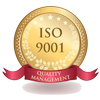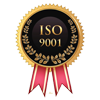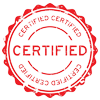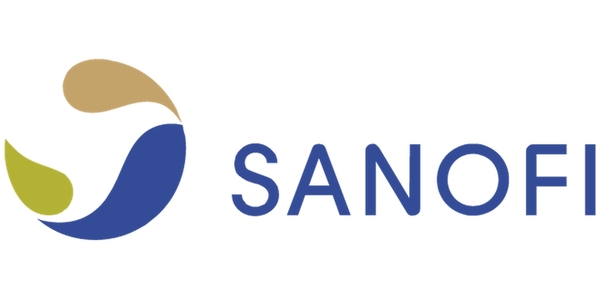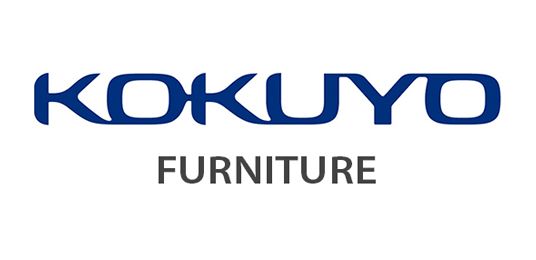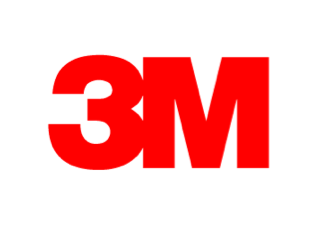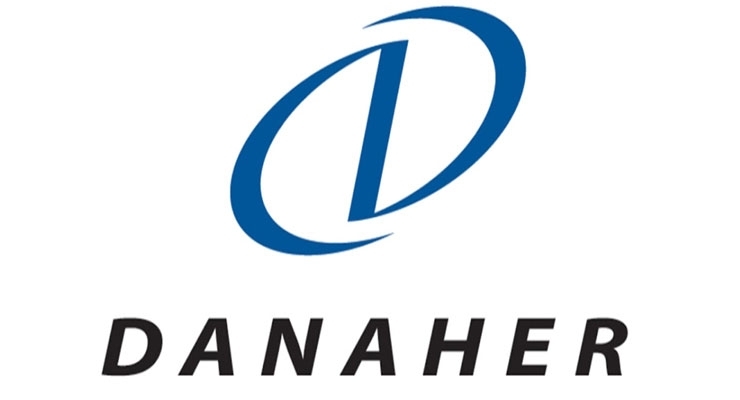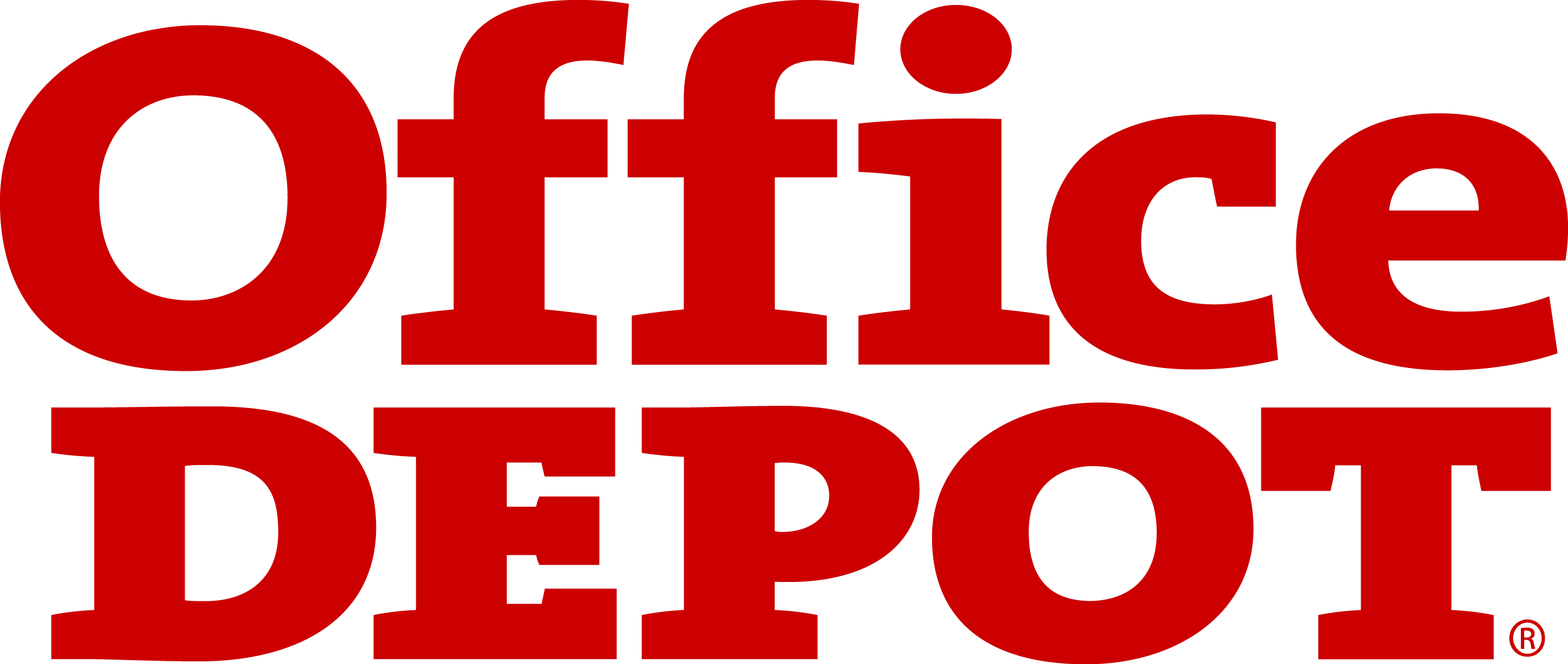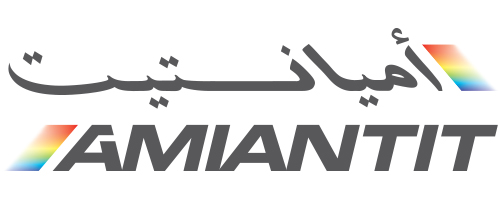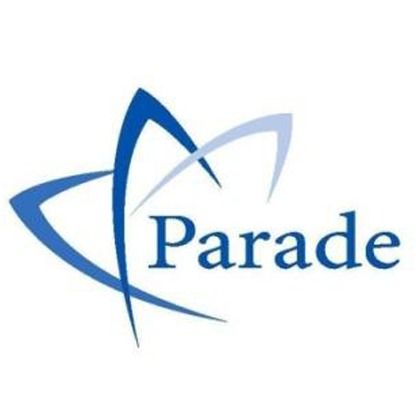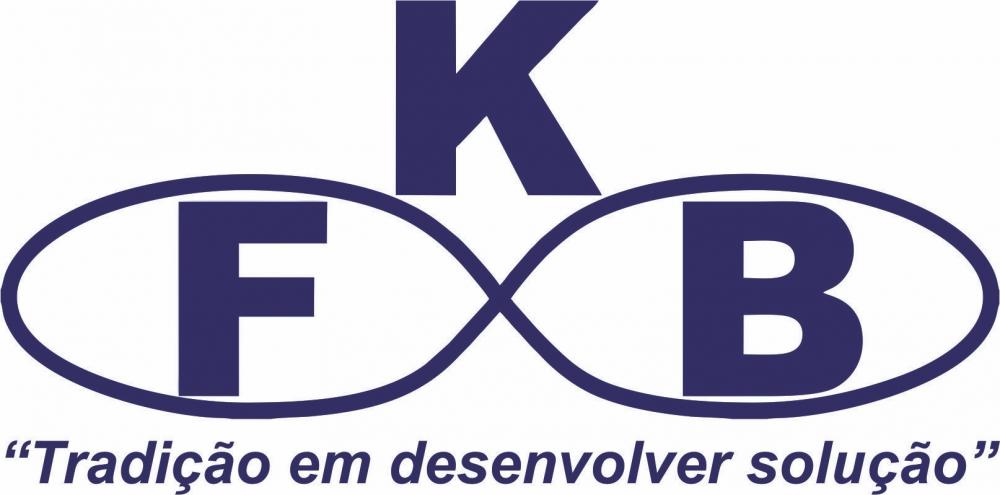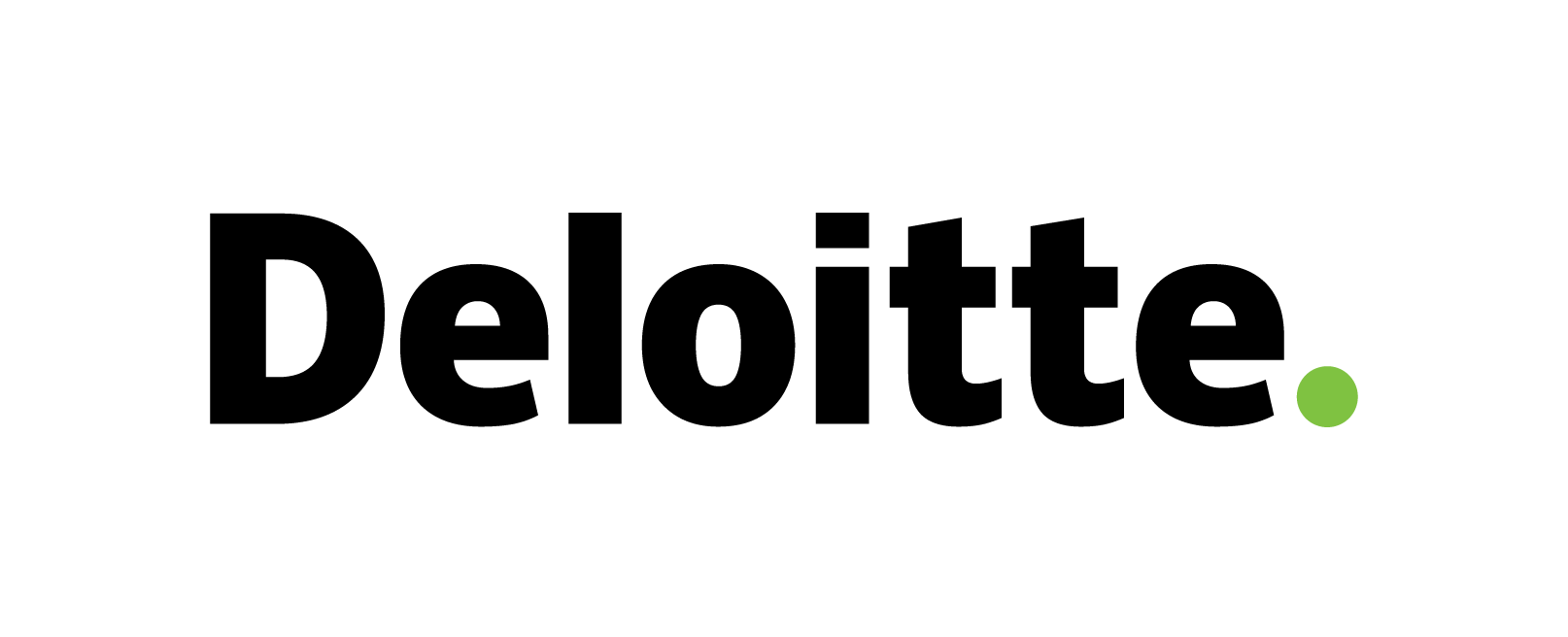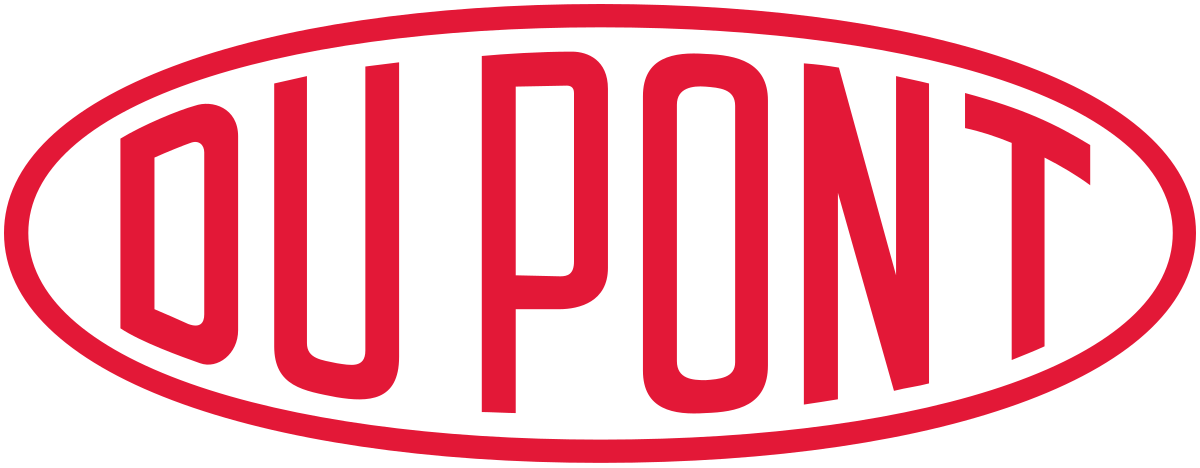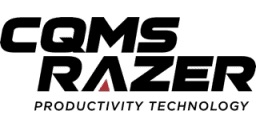Sinusitis Treatment Market By Disease Type (Acute Sinusitis, Sub-Acute Sinusitis, Chronic Sinusitis); By Treatment (Analgesics, Antihistamines, Corticosteroids, Antibiotics, Sulphonamides, Quinolones, Surgery); By Route of Administration (Topical, Nasal, Oral, Injectable); By End-Users (Hospitals, Homecare, Specialty Clinics, Others); By Region (North America, Europe, Asia Pacific, Latin America, Middle East & Africa) - Global Market Analysis, Trends, Opportunity and Forecast, 2022-2032
Sinusitis Treatment Market Insight
Sinusitis is a condition that occurs whilst the tissue lining the sinuses turns into inflamed, swollen, and infected. The sinuses are air-filled spaces in the bones of the face and skull that connect to the nasal passages. When the sinuses are blocked due to inflammation, the mucus accumulates and may turn out to be infected with microorganisms, viruses, or fungi. Treatment of sinusitis generally relies upon the severity and duration of the symptoms, as well as the foundation motive of the infection. Sinusitis can be treated with medications, antibiotics, nasal corticosteroids, nasal irrigation, and surgery. Sinusitis is classified into three distinct categories: acute sinusitis, subacute sinusitis, and chronic sinusitis.
Sinusitis Treatment Market Size and Share
The sinusitis treatment market is predicted to develop in the coming years because of the growing incidence of sinusitis, growing consciousness approximately the disease, and advancements in technology. The market can be segmented by treatment, which includes medication, surgery, and others. Medication is the maximum widely used remedy for sinusitis and consists of antibiotics, anti-inflammatory tablets, and decongestants. Surgery is likewise a not-unusual remedy for sinusitis, especially for patients with chronic sinusitis or nasal polyps. Other treatments consist of nasal irrigation and corticosteroid sprays. The global Sinusitis Treatment Market was valued at approximately USD 3.18 billion in 2022 and is projected to succeed in USD 5.17 billion by 2032, with a compound annual rate of growth (CAGR) of 5% during the forecast period (2023-2032).
Sinusitis Treatment Market: Report Scope |
|
|
Base Year |
2022 |
|
Base Year Market Size |
USD 3.18 billion |
|
Forecast Year |
2023-2032 |
|
Forecast Year Market Size |
USD 5.17 billion |
|
CAGR Value |
5% |
|
Segmentation |
|
|
Challenges |
|
|
Growth Drivers |
|
Sinusitis Treatment Market Driving Factors
The sinusitis treatment market is driven by several factors, including:
- Increasing prevalence of sinusitis: Sinusitis is a common condition, affecting millions of people worldwide. The increasing prevalence of sinusitis is driving the growth of the sinusitis treatment market. Also, Increase in the number of patients suffering from chronic sinusitis.
- Growing awareness about the disease: With increasing awareness about the disease, more and more people are seeking medical treatment for sinusitis. This is driving the growth of the sinusitis treatment market.
- Advancements in technology: Advancements in technology have led to the improvement of the latest and greater effective remedies for sinusitis, including biologics and new drug transport systems, that are predicted to drive the boom of the sinusitis remedy market.
- Increase in the number of allergic rhinitis and asthma patients: Increase in the number of people suffering from respiratory diseases, which are often associated with sinusitis.
- Increased healthcare costs and increased number of hospitals and clinics: Increased healthcare fees and an improved number of clinics and hospitals may also enhance the effectiveness of remedies for individuals with sinusitis. This can result in earlier diagnosis and remedy, and better management of the situation. Hospitals and specialized systems also can offer more accurate diagnoses and remedies.
Sinusitis Treatment Market Key Trend & Development
There are several key trends and development in the field of the Sinusitis Treatment Market:
- Minimally Invasive Procedures: The demand for minimally invasive techniques to treat sinusitis is on the rise due to shorter treatment duration, improved patient outcomes, and fewer complications. Popular techniques include balloon sinuplasty, which uses a small balloon to dilate the sinus opening, and endoscopic sinus surgery, which employs an endoscope for sinus visualization.
- Advancements in Imaging Technology: Advanced imaging technologies, such as CT scans and MRIs, have dramatically increased the accuracy of vascular exploration and diagnosis during surgery, improving and reducing surgical management and patient outcomes overcoming the need for exploratory surgery, to enable targeted and precise treatment.
- Personalized Medicine: Personalized Medicine to individual patients based on factors such as symptom severity, etiology, and medical history provides personalized medicine with traction in the treatment of sinusitis and therefore leads to clinical outcomes good and effective care.
- Non-Pharmacological Therapies: Non-pharmaceutical treatments such as nasal saline irrigation and probiotics are becoming increasingly popular treatments for oral cavities. Saline nasal sprays help drain the nasal passages outward, preventing the nose from catching its symptoms. Probiotics can help rebalance the bacteria in the tissues, reducing the risk of infection.
Sinusitis Treatment Market Segmentation:
The Sinusitis Treatment Market can be segmented based on the following:
- By Disease Type
- Acute Sinusitis
- Sub-Acute Sinusitis
- Chronic Sinusitis
- By Treatment
- Analgesics
- Antihistamines
- Corticosteroids
- Antibiotics
- Sulphonamides
- Quinolones
- Surgery
- By Route of Administration
- Topical
- Nasal
- Oral
- Injectable
- By End-Users
- Hospitals
- Homecare
- Specialty Clinics
- Others
- By Geography
- North America
- Europe
- Asia-Pacific
- Latin America
- Middle East & Africa
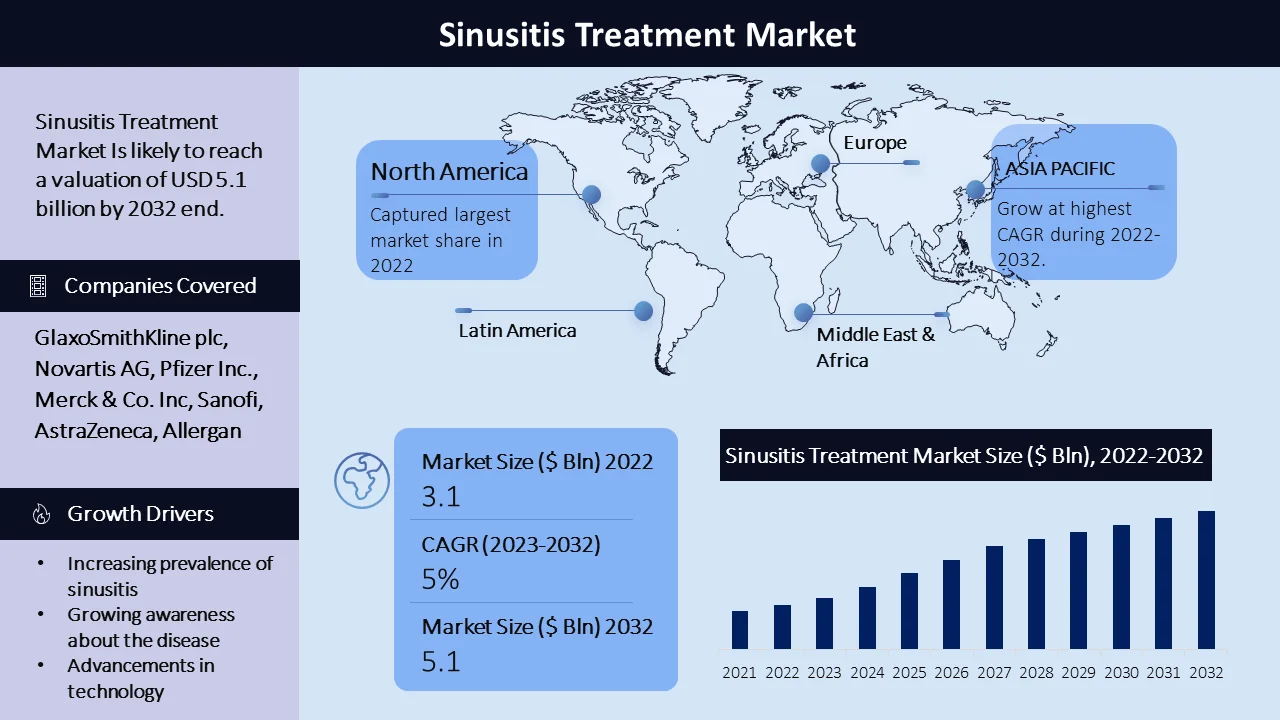
Sinusitis Treatment Market Regional Synopsis
North America is predicted to dominate the worldwide sinusitis treatment marketplace due to the presence of a big affected person population and properly-evolved healthcare infrastructure in the region. By 2032, the market is predicted to be worth $1.89 billion, growing at a CAGR of 5.5 % (2023-2032), with the USA serving as the region's largest market against an earlier estimation of worth $1.11 billion in 2022.
Europe is likewise anticipated to be a primary contributor to the global sinusitis remedy market because of the presence of a huge patient populace and increasing prevalence of sinusitis and developing awareness about the disorder. By 2032, the market is predicted to be worth $1.29 billion, growing at a CAGR of 5% (2023-2032) against an earlier estimation of worth $795 million in 2022.
The Asia Pacific sinusitis treatment market is predicted to develop at a vast rate at some point in the forecast duration because of the growing prevalence of sinusitis in this vicinity. The increasing adoption of biologics and new drug transport structures is predicted to create new possibilities for the sinusitis remedy market in the Asia Pacific region. By 2032, the market is predicted to be worth $1.25 billion, growing at a CAGR of 7% (2023-2032) against an earlier estimation of worth $636 million in 2022.
The Latin American sinusitis remedy marketplace is predicted to develop at a moderate charge during the forecast duration because of the growing occurrence of sinusitis in this area. By 2032, the market is predicted to be worth $564.8 million, growing at a CAGR of 4% (2023-2032) against an earlier estimation of worth $381.6 million in 2022.
The Middle East and Africa sinusitis treatment market is predicted to grow at a moderate charge at some stage in the forecast duration due to the growing incidence of sinusitis in this region. By 2032, the market is predicted to be worth $358.8 million, growing at a CAGR of 3.5% (2023-2032) against an earlier estimation of worth $254.4 million in 2022.
Sinusitis Treatment Market Challenges
The sinusitis treatment market is facing several challenges, including:
1. High cost of treatment: The high cost of treatment is a main venture for the sinusitis remedy market. The price of drugs and surgeries may be prohibitively high-priced for lots of patients, which may additionally limit get entry to treatment.
2. Lack of reimbursement policies in some countries: In some countries, there are limited reimbursement policies for the treatment of sinusitis, which may make it difficult for patients to access treatment.
3. Limited availability of specialized healthcare facilities: In some countries, there may be limited availability of specialized healthcare facilities that can diagnose and treat sinusitis, which may make it difficult for patients to access treatment.
4. Antimicrobial resistance: Overuse of antibiotics for sinusitis may lead to the development of antibiotic-resistant bacteria, making it harder to treat the infection.
5. Lack of effective non-surgical treatments for chronic sinusitis: Chronic sinusitis may be difficult to deal with, and there are presently no non-surgical treatments that might be considered to be highly effective for this condition.
Sinusitis Treatment Market Key Players
The sinusitis treatment market is a competitive market with the presence of many large and small players. Some key players in the market include:
- GlaxoSmithKline plc
- Novartis AG
- Pfizer Inc.
- Merck & Co. Inc
- Sanofi
- AstraZeneca
- Teva Pharmaceutical Industries Ltd
- Allergan
- Sunovion Pharmaceuticals Inc
- Dr. Reddy’s Laboratories Ltd

Need Customized Report for Your Business ?
Utilize the Power of Customized Research Aligned with Your Business Goals
Request for Customized Report- Quick Contact -
- ISO Certified Logo -
